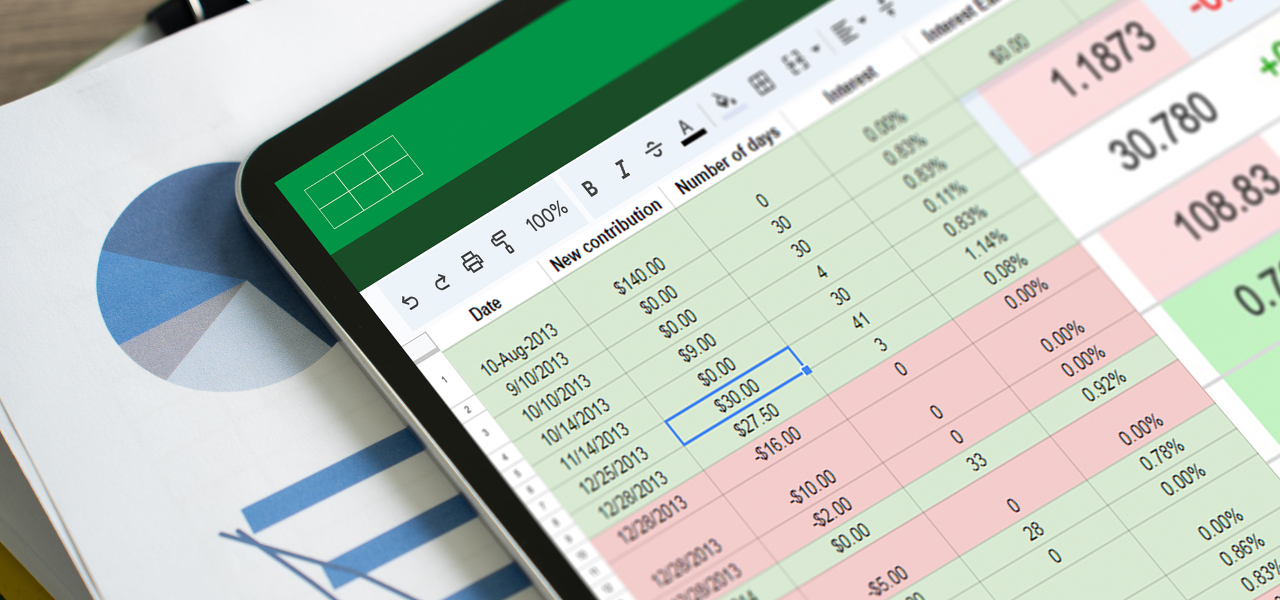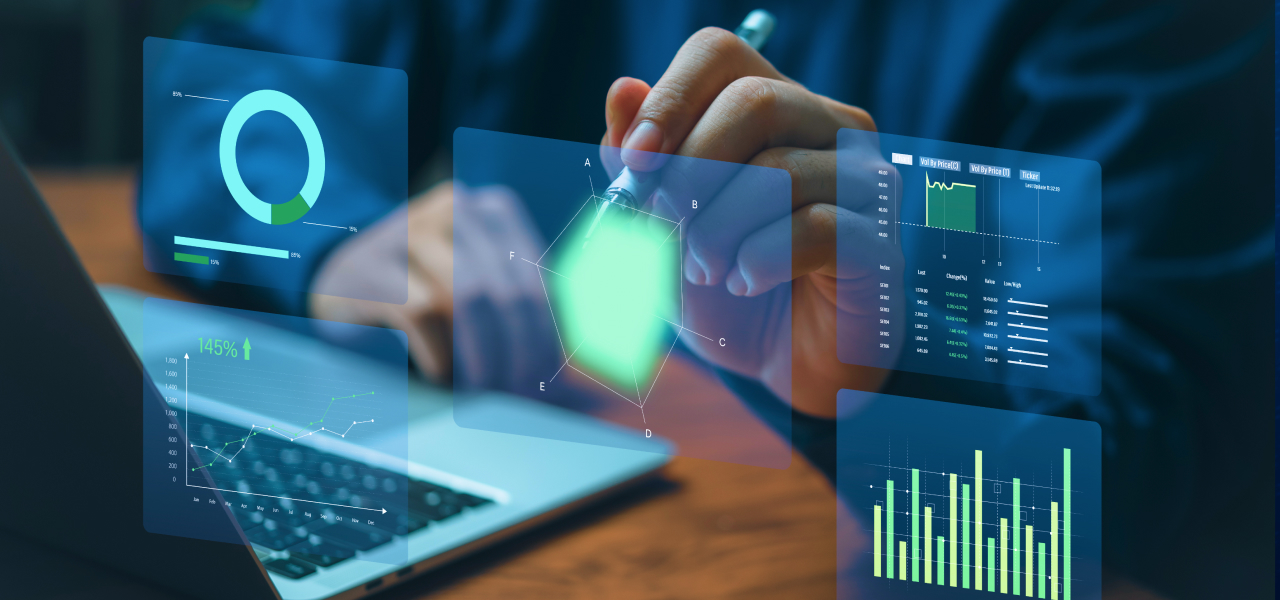The April 2025 Tariff Shock
On April 2, 2025, President Donald Trump announced sweeping tariffs, including a 10% levy on Chinese goods and additional duties on imports from Canada and Mexico, escalating his trade war rhetoric. By April 4, the market reacted violently: the Dow Jones Industrial Average plummeted 2,231 points (5.5%), the S&P 500 sank 6%, and the Nasdaq Composite dropped 5.8%, marking the worst two-day sell-off since the 2020 pandemic. The VIX, Wall Street’s fear gauge, surged to 45.31, its highest since April 2020. For portfolio managers like James Carter at PrimePulse Investments, a mid-sized hedge fund with $2 billion in assets under management (AUM), the stakes were immediate. His fund held significant positions in U.S. manufacturing and tech—sectors hammered by tariff-driven cost fears.
Without real-time reporting, Carter’s team would have been mired in end-of-day reports, estimating exposures as losses mounted. Instead, PrimePulse’s investment in a cloud-based ERP system, integrated with live market feeds and AI analytics, provided clarity. By 10 a.m. on April 4, Carter’s dashboard showed a projected 5.5% hit to his portfolio’s value, driven by declines in stocks like Caterpillar (down 6% that day). By noon, he had reduced exposure to tariff-sensitive industrials and tech, preserving $35 million in AUM that peers without such systems lost.
This wasn’t chance—it was preparation. PrimePulse’s story illustrates why real-time reporting is critical in an era of erratic trade policies. This article dissects that necessity through Carter’s experience, blending current events with technical and academic insights to equip financial professionals with tools for today’s volatile markets.
How FundCount Enabled Real-Time Reporting at PrimePulse Investments
PrimePulse’s ability to navigate the April 4 tariff shock hinged on advanced financial technology, with FundCount playing a pivotal role. FundCount, a specialized software platform, integrates portfolio, partnership, and general ledger accounting into a unified system. Its continuous accounting framework processes transactions through a real-time general ledger, ensuring financial data remains current—a critical advantage during the market’s rapid unraveling.
Unlike traditional systems that batch-process at period-end, FundCount’s real-time ledger records every trade, cash flow, or market adjustment instantly. On April 4, this allowed Carter to access an up-to-date view of PrimePulse’s AUM as the sell-off intensified. The immediacy eliminated delays common in legacy systems, enabling precise decision-making when seconds mattered.
FundCount’s automated data collection and reconciliation, powered by its ETL (Extract-Transform-Load) importer, pulled data from custodians, brokers, and market feeds with minimal manual effort. This reduced errors and ensured data reliability during the crisis. For PrimePulse, it meant reconciling positions swiftly, pinpointing exposures to battered sectors like industrials, and adjusting strategies on the fly.
The platform’s reporting tools further amplified its value. FundCount supports on-demand reports across diverse asset classes, delivering granular insights like sector-specific performance and real-time net asset value (NAV). During the sell-off, Carter used these to analyze tech and manufacturing declines, guiding his pivot to defensive assets. This capability marked a leap over static reporting, aligning with the pace of modern markets.
FundCount’s design reflects a broader trend: as policy shocks like Trump’s tariffs accelerate market dynamics, integrated, real-time solutions are essential. PrimePulse’s case underscores how such tools empower firms to act with precision, reinforcing the need for continuous accounting in volatile times.
Why Now? The Trade War’s Accelerating Chaos
Trade policies in 2025 have been a rollercoaster. The April 2 tariff announcement followed months of escalating rhetoric, with markets already jittery from earlier duties on Chinese goods (raised to 54% in March). The April 4 sell-off, wiping $5 trillion from the S&P 500 over two days, was exacerbated by China’s retaliatory 34% tariff on U.S. goods, announced the same day. Yet, on April 9, Trump paused many tariffs for 90 days, sparking a historic rebound—the S&P 500 soared 9.5%, its best day since 2008. Such volatility—described by Reuters as a “whipsaw week”—demands tools that match its speed.
The numbers tell a grim story. Goldman Sachs raised its 2025 recession odds to 35%, citing tariff-driven inflation risks. J.P. Morgan estimates the policies could cut U.S. GDP by 0.8%, with global growth down 0.5%. For portfolios, the pain is specific: Bank of America forecasts an 8% earnings hit for S&P 500 firms, especially in tech and industrials. Emerging markets like Indonesia face a projected 0.3–0.5% GDP drop, per the IMF, affecting diversified funds.
Academic research supports the urgency. A 2023 Journal of Financial Economics study (Chen et al.) found that real-time data reduced volatility-adjusted losses by 12% during the 2018–2019 trade war. In 2025’s sharper swings, that edge is likely greater. PrimePulse’s response on April 4 isn’t an anomaly—it’s a model for what’s needed.
Continuous Accounting in Action
PrimePulse’s success stemmed from a robust data infrastructure, rooted in continuous accounting. Here’s how it functioned on April 4:
- Cloud-Based ERP Systems: PrimePulse’s platform, akin to Oracle NetSuite, centralized data across trading and back-office operations. APIs linked to Bloomberg Terminal feeds updated valuations as the Dow fell 2,231 points, giving Carter a live view of losses.
- Automation and RPA: Robotic Process Automation reconciled trades to accounting entries in real time. This eliminated the 12–24-hour lags PrimePulse once faced, vital when stocks like Apple dropped 5% intraday.
- System Integration via APIs: APIs connected the ERP to NYSE feeds and U.S. Customs data, reflecting tariff impacts instantly. By 10:30 a.m., Carter’s system flagged cost spikes in tech supply chains, guiding his sell orders.
- AI/ML for Anomaly Detection: AI identified a 7% drop in Caterpillar shares within 15 minutes, prompting Carter to cut industrials exposure. Machine learning models, trained on past volatility, predicted a 65% chance of further declines—proven correct by day’s end.
This infrastructure turned raw data into actionable insights. When Carter saw tech costs rise due to Chinese tariffs, he sold 50% of his Apple position at $210/share, avoiding a slide to $200. That precision defines continuous accounting’s value.

Evidence from the Field
PrimePulse’s experience highlights four benefits of real-time reporting, grounded in April’s events and research:
- Rapid Impact Assessment: By 10 a.m. on April 4, PrimePulse quantified a 5.5% portfolio hit, enabling Carter to act while others awaited reports. A 2025 Office of Financial Research note suggests real-time systems cut losses by 8% in similar shocks.
- Dynamic Risk Management: Real-time Value-at-Risk metrics showed PrimePulse’s exposure rising from 1.4% to 2.6% daily VaR. Carter trimmed leverage by 15% by noon, unlike peers facing deeper losses.
- Seizing Short-Lived Opportunities: The April 9 rebound lifted stocks like Nvidia 15%. PrimePulse’s live P&L tracking identified undervalued tech, yielding a $12 million gain on re-entry—missed by funds stuck with April 8 data.
- Stakeholder Confidence: Carter’s 1 p.m. investor briefing on April 4, backed by live financials, maintained client trust. Competitors, delayed by reporting lags, faced redemption pressures.
These outcomes echo history. In 2018–2019, the Economic Policy Institute noted firms with real-time analytics mitigated trade shocks 15% better. In 2025’s chaos, that advantage is amplified.
Implementation Challenges
Adopting real-time reporting has hurdles, as PrimePulse learned:
- Cost and Scalability: The $1.2 million ERP and AI setup stretched budgets. Yet, cloud systems cut maintenance costs by 30% versus on-premises, per a 2024 Gartner study.
- Data Overload: Daily feeds hit 10,000+ points, risking overwhelm. PrimePulse used AI to filter signals (e.g., drops >5%), a tactic replicable with tools like Tableau.
- Skill Gaps: Retraining 15 staff over six months cost $200,000. Vendor-led modular training eased this, a lesson for smaller firms.
- Compliance Risks: Real-time data must meet GAAP and SEC standards. PrimePulse’s automated audit trails ensured traceability—a must for adopters.
These challenges are navigable. PrimePulse’s phased rollout—starting with one asset class—offers a roadmap: test, refine, scale.
Strategic Takeaways for Portfolio Managers
Current market uncertainty shows no signs of easing. With duties potentially covering 40% of imports by 2026, per Goldman Sachs, volatility is entrenched. Real-time reporting, as PrimePulse demonstrates, turns chaos into opportunity. The evidence is stark: firms with these tools outperform in crises (Chen et al., 2023; OFR, 2025). For managers, action is urgent.
Begin with integration: connect ERPs to market feeds via APIs (e.g., Refinitiv). Add automation to slash lags. Use AI to prioritize signals. The cost is dwarfed by losses from delay. Carter’s $35 million save on April 4 proves it.








